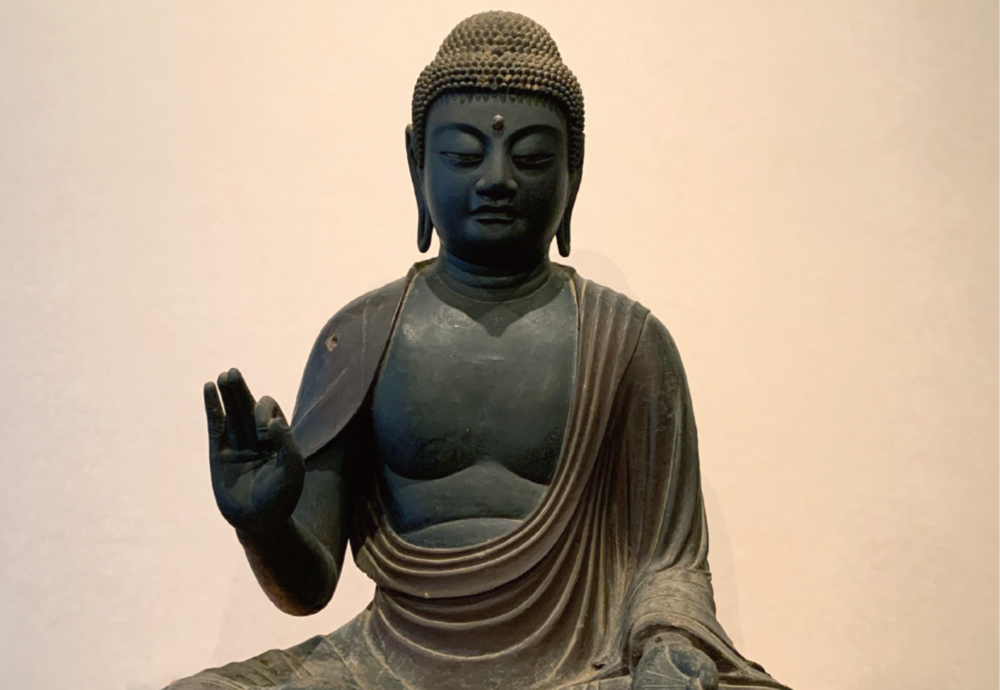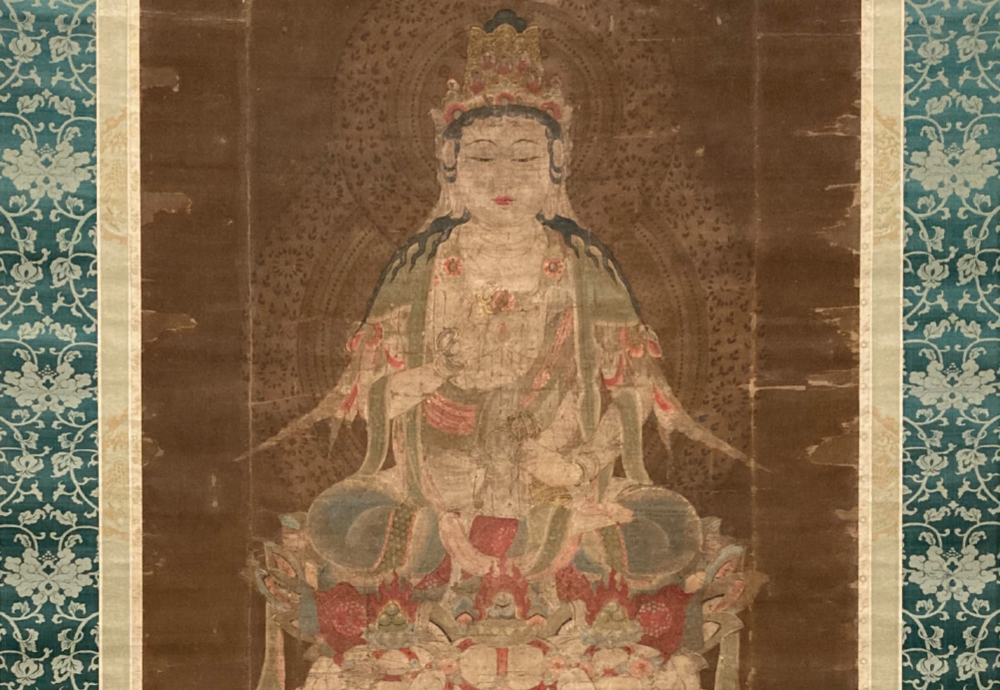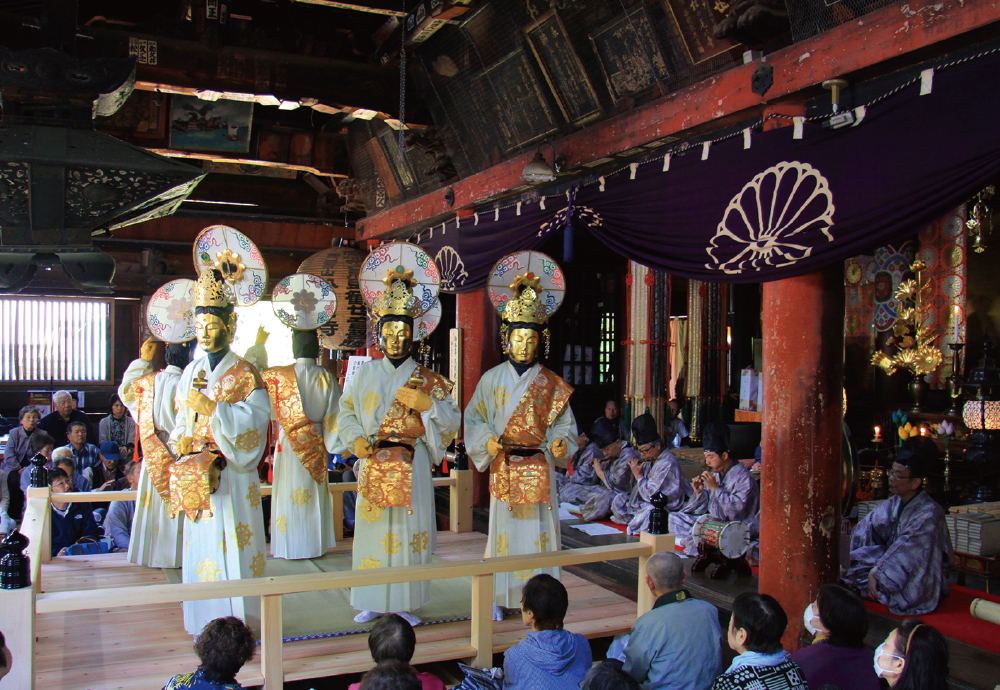Matsuno'o-dera Temple on Mt. Aoba, founded in 708 by Priest Iko, enshrines a statue of Bato Kannon (Horse-headed deity with compassion).
It is an object of religious beliefs and practices related to fishing, farming, traffic safety, animal protection,and even horse racing.
The temple is Pilgrimage Site 29 on the Saikoku Kannon Pilgrimage registered as a Japan Heritage site, which is Japan's oldest route.
The old gingko tree on the site, designated as a natural monument by Maizuru City, is said to have been planted by Emperor Toba himself in 1119.
The temple also has many cultural properties, including a national treasure painting and the Buddha Dance "Hotoke-mai" since the Middle Ages.

Ink inscriptions were found inside the head of this wooden sitting statue of Amida Nyorai in 1963, revealing that it was an early work of Kaikei's, a sculptor of Buddhist statues in the early kamakura period.
It lacks a pedestal and halo, and although the hands were repaired later, it has won high appraisal as a particularly outstanding early work of Kaikei's.
There are around 20 statues throughout Japan that had been inscribed by Kaikei himself. Three of them are in Maizuru City, with one enshrined in Matsuno'o-dera Temple, and the other two enshrined in Kongoin Temple.
It was designated as an important cultural property in June 1971.









